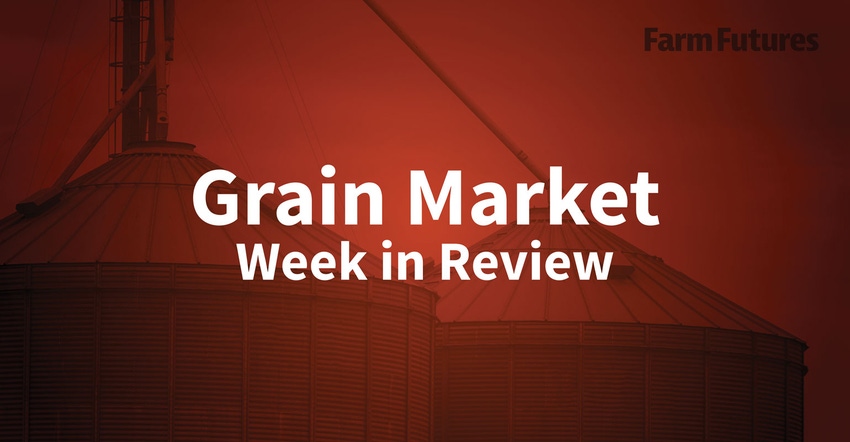December 11, 2020

Missed some market news this week? Here's a roundup from the week.
Ag Marketing IQ
Big speculators and Wall Street investors went on a corn buying spree this fall, helping drive futures toward the top of their trading range over the past seven years. But the hopes of farmers holding 2020 crop inventory could depend on another class of traders who are much closer to home. The positions of commercial firms may offer clues to what happens to the cash market in the first half of 2021.
What else will 2020 be remembered for? The 12 months of grain market volatility packed into the final four months of the year. What seemed to be a very stale marketing year with limited prospects finished with a bang – and nice pricing opportunities.
I spent last Sunday at our family farm in Minas Gerais, Brazil. The corn that was planted late October looks excellent and is already nearly six feet tall. They usually plant about 1,000 acres of first crop corn that goes for silage to feed their dairy. With more rainfall, the summer crop has more yield potential than the second crop, and seems on track to surpass 200 bushels per acre unless abnormal weather takes place between now and harvest.
Price volatility continues in the dairy complex. During the latter half of 2020, Class III milk futures were supported due to the government cheese buying program. This cheese demand allowed Class III futures to rally to the $24.00 price point this summer, and again come close to it during October, in spite of near record milk production. With the cheese buying program coming to an end, front month Class III milk futures have slipped back down to the mid $15.00 price point. With the pandemic still raging, restaurants and schools still closed, and some Americans still needing financial assistance due to losing their jobs because of the pandemic, the biggest question mark for the Class III market is if the government will continue the Farm to Family food box program into 2021?
There is a battle brewing for 2021 acres, and 90 million for either corn or soybeans might not cut the mustard. USDA’s WASDE December update made no changes from November, but we feel additional adjustments are necessary to export demand as we look ahead to January’s report. The bottom line is that at 90 million planted acres for either crop, an above trend yield will be needed to grow stocks. If a legitimate weather threat emerges during our domestic growing season next summer, just the conversation of sub-trend yields should cause a rally in prices to ration demand. We need to ration demand.
WASDE
Trade estimates point to tightening corn and soybean supplies in this month's WASDE, while wheat supplies continue to notch historic highs on the global balance sheet. Here is a list of the top items that could shift markets.
USDA slashed Argentine corn and soybean output figures for the 2020/21 marketing year in Thursday morning’s World Agricultural Supply and Demand Estimates (WASDE) report. Rising domestic usage rates for U.S. soybeans shrunk ending stocks to a mere 175 million bushels – the tightest level since 2013. Unseasonably strong export demand for U.S. wheat led to USDA bumping up 2020/21 wheat export forecasts.
Exports
Grain export inspections for the week ending December 3 showed slight to moderate declines for corn, soybeans and wheat. Soybeans fared the best, topping all trade estimates and moving slightly below the prior week’s tally. Wheat landed in the middle of trade estimates, with corn failing to match analyst expectations last week.
In the latest export sales report from UDSA, soybeans partially recovered from a big slump a week ago but still remain significantly lower than the prior four-week average. Corn moved slightly lower week-over-week but maintained a slim lead over the prior four-week average. And wheat sales jumped 38% higher week-over-week, besting all trade guesses
Podcast
Last month’s World Agricultural Supply and Demand Estimates (WASDE) report helped fuel a rally that lasted from the middle of November to early December. Prices have finally started to sputter – just in time for December’s WASDE report. In the latest Midweek Markets, we also cover the latest ethanol trends and talk through the implications of managed funds holding relatively large net long positions for both corn and soybean contracts.
Recaps
WASDE helped slow the bleeding in the corn futures market somewhat yesterday, but futures still edged lower overnight as no adjustments to domestic ending stocks left the corn complex susceptible to losses on higher supplies. Smaller than expected cuts to soy ending stocks and unchanged U.S. export figures exposed the soy complex to downside price potential after yesterday’s WASDE report. Losses were capped by increasing domestic demand. Wheat futures rallied this morning after a bullish WASDE report yesterday. Russian measures to reduce domestic food price instability will invariably take Russian exportable supplies off the market, offering more profit potential to U.S. wheat exporters, especially as the dollar weakens.
Despite shrinking long positions from speculative traders over the past week, corn futures followed the wheat rally higher today. Soybean futures largely ignored speculator selloffs this week in favor of strong export loading paces and growing concerns about shrinking domestic supplies. Wheat futures continued their rally after a bullish WASDE report yesterday.
About the Author(s)
You May Also Like




